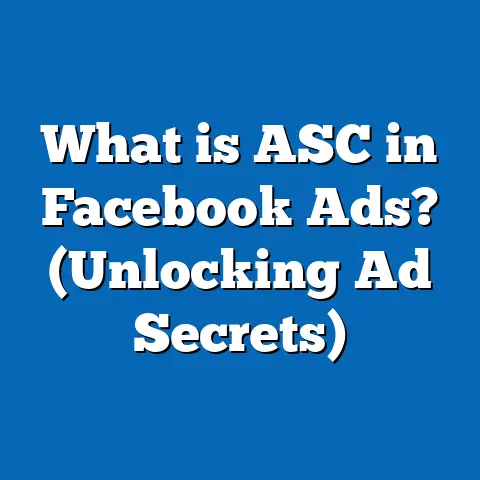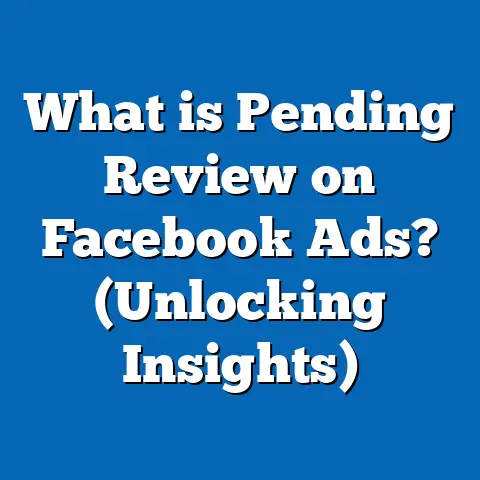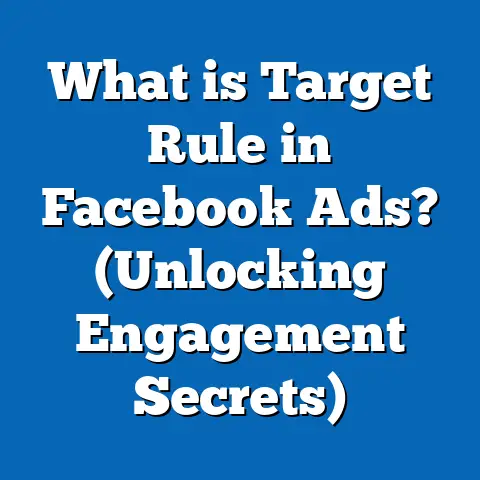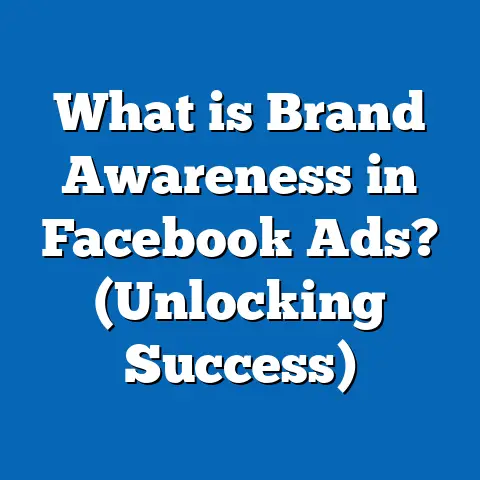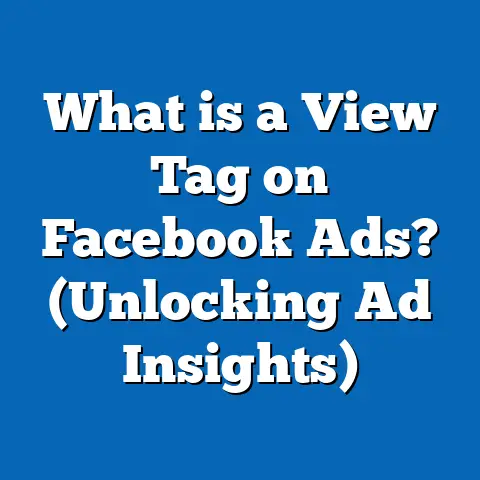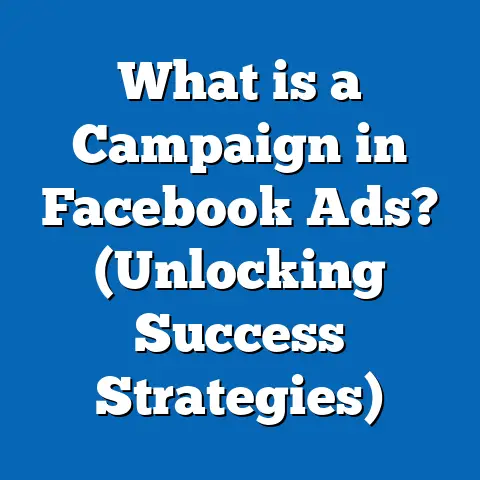What is DCT in Facebook Ads? (Unlock Your Ad Potential)
What is DCT in Facebook Ads? (Unlock Your Ad Potential)
Introduction: The Quest for Cost-Effective Advertising
In today’s digital marketing world, every advertising dollar must justify its spend. Facebook Ads offer access to billions of users worldwide, but the challenge lies in targeting the right people with the right message at the right time. Marketers constantly face the dilemma of balancing budget constraints with campaign effectiveness. That’s where Dynamic Creative Testing (DCT) steps in as a game-changer.
DCT empowers advertisers to automate the creative testing process, efficiently identifying which ad elements work best without manual trial and error. This not only saves time but significantly enhances cost-efficiency, allowing marketers to extract maximum value from their campaigns.
Understanding Dynamic Creative Testing (DCT)
What is Dynamic Creative Testing?
Dynamic Creative Testing is a Facebook Ads feature designed to optimize ad performance by testing multiple combinations of creative assets simultaneously. Instead of creating multiple separate ads, advertisers upload various images, videos, headlines, texts, and calls to action. Facebook’s algorithm then dynamically assembles these elements into different ad variations and serves them to the audience.
The system continuously analyzes which combinations perform better based on campaign objectives and shifts budget allocation towards the winning creatives automatically. DCT is essentially an automated multivariate testing tool within Facebook Ads Manager.
How DCT Differs from Traditional A/B Testing
- Traditional A/B testing requires manual setup of multiple ads with single variable changes (e.g., headline A vs. headline B), which can be laborious and time-consuming.
- DCT automates this by testing many creative elements at once across numerous combinations, making it faster and more scalable.
Why DCT Matters Now
In 2024, data-driven marketing has become a necessity rather than a luxury. Facebook’s evolving privacy policies and algorithm updates mean advertisers must rely on smarter automation to maintain performance. DCT leverages Facebook’s AI capabilities to counteract data loss from limited tracking and optimize ads effectively in this changing landscape.
The Mechanics Behind Dynamic Creative Testing
How Facebook’s Algorithm Manages Dynamic Creatives
Facebook uses machine learning models that analyze user behavior signals like clicks, conversions, and engagement patterns to predict which creative combinations will perform best for specific audience segments.
- When a user sees an ad, they are shown one of many possible creative combinations.
- Facebook tracks how users respond to each variation.
- The algorithm gradually prioritizes those combinations with higher engagement or conversion rates.
This ongoing learning loop makes DCT campaigns more efficient over time.
Key Elements Tested in DCT
| Element Type | Description | Example Variations |
|---|---|---|
| Images/Videos | Visual content to attract attention | Product photo, lifestyle image |
| Headlines | Short attention-grabbing text | “50% Off Sale,” “Limited Time Offer” |
| Primary Text | Main descriptive message | Benefits-focused, emotional appeal |
| Calls to Action (CTA) | Action prompts encouraging user interaction | “Shop Now,” “Learn More,” “Sign Up” |
| Links/URLs | Destination landing pages | Homepage, product page |
The algorithm tests these assets in different permutations to identify the optimal mix.
The Importance of DCT for Cost-Effective Advertising
Data-Driven Cost Efficiency
A recent Facebook Business study found advertisers using Dynamic Creative Testing achieved:
- Up to 30% reduction in cost per conversion.
- 25% higher click-through rates compared to static creatives.
- Improved return on ad spend (ROAS) by 15-35% within the first month.
Why Does DCT Save Money?
- Automated Optimization: The system stops wasting impressions on low-performing creatives early.
- Faster Insight Cycle: Instead of lengthy manual testing phases, marketers get data-backed results quickly.
- Reduced Creative Production Costs: You create fewer individual ads while testing more combinations.
Quantifying Benefits — Industry Data
- According to WordStream’s 2024 report, dynamic creatives outperform traditional ads in CTR by an average of 20%.
- Advertisers who used DCT during Black Friday campaigns reported a 50% faster increase in sales compared to previous years without dynamic testing.
Step-by-Step Guide: Setting up DCT on Facebook Ads
Step 1: Define Clear Campaign Objectives
DCT supports objectives like:
- Conversions
- Traffic
- App Installs
- Lead Generation
- Catalog Sales
Choosing the right objective aligns optimization goals with business outcomes.
Step 2: Create a New Campaign
- Open Facebook Ads Manager.
- Start a new campaign and select your objective.
- Proceed to Ad Set level.
Step 3: Enable Dynamic Creative
In your ad set settings, toggle on Dynamic Creative.
Step 4: Upload Multiple Creative Assets
Provide several options for each creative element:
- Upload 3–5 images or videos.
- Write 3–5 headlines.
- Provide 3–5 primary text variants.
- Choose different CTAs if applicable.
Step 5: Define Your Target Audience
Use detailed targeting options such as location, interests, behaviors, demographics, or custom audiences for retargeting.
Step 6: Launch and Monitor Campaign
Once live:
- Monitor key metrics like CPA, CTR, ROAS.
- Use Facebook Ads Manager breakdowns to analyze performance by creative element.
- Refresh assets regularly based on performance insights.
Practical Examples of DCT in Action
Example 1: Fashion Retailer Case Study
A mid-sized fashion brand launched a summer campaign using DCT with:
- 6 images featuring various clothing styles.
- 4 headlines emphasizing discounts and style benefits.
- 3 CTAs (“Shop Now,” “View Collection,” “Limited Offer”).
Results after 3 weeks:
- CTR increased by 28%
- Cost per purchase dropped by 22%
- The winning combination featured lifestyle imagery plus a discount-focused headline with “Shop Now” CTA.
Example 2: SaaS Company Boosts Lead Generation
A SaaS provider tested different messaging angles:
- Headlines highlighting “Free Trial,” “Easy Setup,” and “24/7 Support.”
- Videos showing product demos vs. customer testimonials.
Outcome:
- Lead generation increased by 35%
- Cost per lead decreased by 18%
The testimonial video combined with “24/7 Support” headline outperformed other variants.
Advanced Insights Into Optimizing Dynamic Creatives
Understanding Audience Segments and Creative Resonance
Different audience segments respond better to specific creative types. For example:
- Younger demographics may prefer video content.
- Older audiences might engage more with clear benefit-driven text.
Using Facebook’s Audience Insights alongside DCT results helps tailor creatives further.
Frequency Management and Avoiding Ad Fatigue
With multiple combinations running simultaneously, some creatives may be overexposed causing fatigue. Keep an eye on frequency metrics:
- If frequency exceeds 3–4 impressions per user with declining CTRs, consider refreshing assets.
Using Automated Rules for Efficiency
Set automated rules in Ads Manager such as:
- Pausing creatives with CTR below a threshold.
- Increasing budget on top performers automatically.
This reduces manual monitoring overhead.
Leveraging Custom Audiences with DCT
Pair DCT with custom or lookalike audiences for hyper-targeted campaigns that test creatives tailored for each segment.
Comparing DCT With Other Testing Methods in Depth
| Feature | Dynamic Creative Testing (DCT) | Manual A/B Testing | Facebook Split Testing |
|---|---|---|---|
| Setup Time | Low — one ad set with multiple assets | High — multiple ads/campaigns | Medium — multiple ad sets |
| Number of Variations Tested | High — multivariate combinations | Low — usually one variable at a time | Medium — tests entire ad sets |
| Automation | Fully automated optimization | Manual analysis & adjustment | Partial automation |
| Budget Efficiency | High — budget focused on winners | Can waste budget on losers | Moderate |
| Complexity | Easy for marketers without coding skills | Requires detailed planning | Requires understanding ad set structure |
| Best For | Rapid testing of creative elements across broad audience | Deep dive into one variable | Audience or placement comparison |
Technical Overview: How Facebook’s AI Enhances DCT
Facebook’s AI uses reinforcement learning algorithms that learn from every impression in real-time:
- Initialization: Randomly serves various creative combinations.
- Feedback Loop: Collects data on user interactions (clicks, conversions).
- Reward System: Assigns higher weights to successful creatives.
- Optimization: Increases delivery of high-performing variants.
- Continuous Learning: Adjusts delivery as audience behavior changes.
This approach ensures campaigns remain adaptive even as market conditions shift.
Common Challenges With DCT and How to Overcome Them
Challenge 1: Insufficient Data Volume
DCT requires enough impressions for the algorithm to learn effectively. For small budgets or niche audiences, data might be sparse.
Solution: Start with broader targeting or increase budget temporarily to gather sufficient data.
Challenge 2: Overloading With Too Many Creatives
Uploading too many assets can dilute algorithm focus and slow learning.
Solution: Limit each element type to 3–5 strong variations rather than dozens.
Challenge 3: Misinterpreting Early Results
Initial performance can fluctuate; premature conclusions may lead to stopping promising creatives.
Solution: Allow at least 7–14 days or a minimum number of conversions before making changes.
Industry-Specific Strategies Using DCT
Retail & E-Commerce
- Test seasonal visuals vs evergreen product shots.
- Compare urgency-driven headlines (“Today Only!”) with soft-sell messaging.
Travel & Hospitality
- Use destination videos vs customer experience testimonials.
- Test different CTAs like “Book Now” vs “Learn More.”
Health & Wellness
- Test educational content vs emotional storytelling.
- Use before-and-after images for stronger impact.
B2B & SaaS
- Try demo videos vs feature highlights.
- Experiment with formal vs conversational language in headlines.
Additional Tools and Resources to Complement DCT
Facebook Ads Manager Reporting Features
Use breakdowns by creative asset type to understand which components drive performance.
Third-Party Analytics Platforms
Tools like AdEspresso or Revealbot can offer enhanced reporting and automation capabilities integrated with Facebook Ads.
Creative Asset Generation Tools
Use Canva or Adobe Spark to quickly create multiple image variants optimized for Facebook specs.
Future Trends in Facebook Advertising Related to DCT
Greater Integration With AI-Driven Copywriting Tools
Expect platforms like Jasper.ai or ChatGPT integrations assisting in generating creative text variants optimized for target audiences.
Expansion of Video Dynamic Creatives
Video content continues growing; future DCT features may allow even more granular video element testing (e.g., intro vs outro clips).
Enhanced Privacy-Compliant Optimization Techniques
With ongoing privacy regulations, Facebook will refine its learning models to optimize ads while respecting user privacy better—making automation tools like DCT even more critical.
Frequently Asked Questions About Dynamic Creative Testing (DCT)
Q1: Can I use DCT across all industries?
Yes. DCT is versatile and effective across e-commerce, SaaS, travel, education, and more.
Q2: How many creative assets should I upload?
Ideally between 3 to 5 per element type (images/videos/headlines/text/CTA). This balances variety with efficient optimization.
Q3: Does DCT work better with smaller or larger budgets?
It works well at both ends but requires enough spend (~$20/day+) for the algorithm to gather actionable data quickly.
Q4: Can I combine DCT with retargeting campaigns?
Absolutely. Retargeting often benefits from tailored creative combinations tested via DCT.
Summary & Key Takeaways
Dynamic Creative Testing in Facebook Ads is a powerful way to maximize ad effectiveness while controlling costs through automated multivariate creative optimization. By leveraging Facebook’s AI-driven learning capabilities, marketers can:
- Test multiple images, videos, headlines, texts, and CTAs simultaneously.
- Quickly identify winning creative combinations tailored for their target audience.
- Reduce cost per acquisition by up to 30%.
- Save time and resources compared to manual A/B testing methods.
- Adapt campaigns dynamically as market conditions evolve.
For any marketer or business owner looking to unlock their advertising potential on Facebook, integrating Dynamic Creative Testing into your strategy isn’t just recommended—it’s essential.
Next Steps: Implementing Dynamic Creative Testing Today
- Audit your existing creative assets and plan variations.
- Set up a new campaign with Dynamic Creative enabled targeting your ideal audience.
- Launch the campaign and monitor key performance indicators closely over the first few weeks.
- Refresh creative assets every 2–4 weeks based on data-driven insights.
- Combine with other automation tools like automated rules for maximum efficiency.
- Stay updated on Facebook Ads platform changes and continually test new ideas using DCT.
By following these steps and best practices outlined above, you will harness the full power of Dynamic Creative Testing on Facebook Ads—unlocking higher engagement rates, improved conversions, and better return on your advertising investment.

